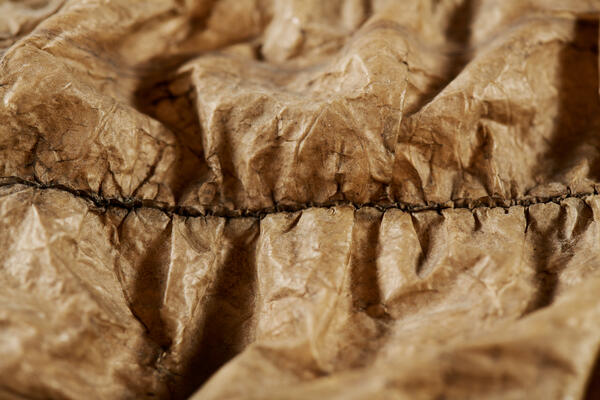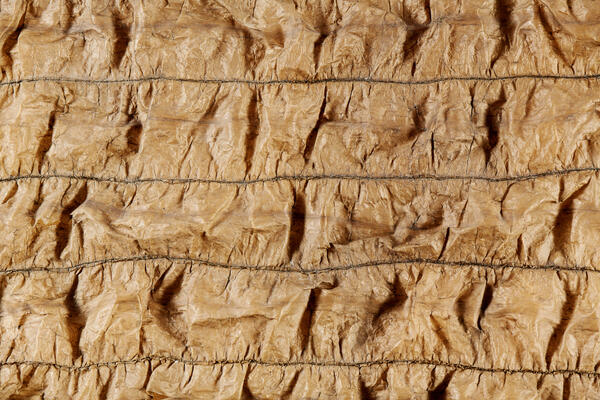A kamleika was an integral part of the Aleuts’ fishing and hunting clothes. Traditional kamleikas were sewn from transversely arranged intestinal strips of predominantly marine animals. The sleeve was an extension of the back and front pieces, while the hood was sewn separately. A cord woven from sinews was passed through the hood at the facial cutout to tighten it.
The seams on kamleikas were always inserted. First, a very frequent basting stitch was made, followed by blanket stitching. The sinew threads, which the Aleuts used for sewing, bulged when exposed to moisture, making the stitches on the clothes completely impermeable to water. For splitting sinews as well as grass, a nail on the index finger was specially grown. It was used to split the tendons of sea animals into thin fibers.
While in the kayak, the hunter had to wear tsuki, a special belt, which looked like a short and wide skirt. It was also sewn from transversely arranged strips made of intestines of marine animals. The tsuki fit tightly around the hunter’s figure, and a strap or sinew cord passed over the left shoulder.
The strongest kamleikas
were made of sea lion intestines, and the most beautiful ones were made of bear
guts. Such kamleikas were not durable. Metropolitan Innokenty (his secular name
was Ivan Yevseevich Popov-Veniaminov) (1797 –1879), wrote,





